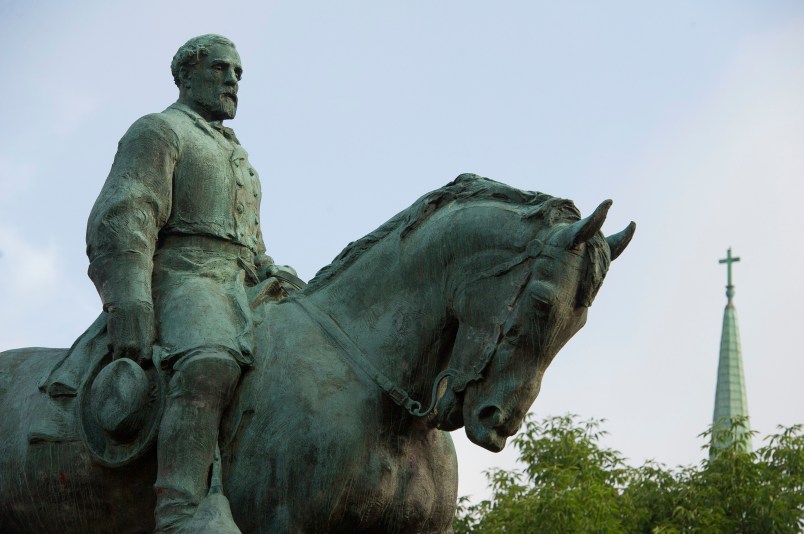Virginia’s Supreme Court on Thursday cleared the path for authorities to remove statues of two Confederate generals, in Charlottesville, Virginia, including one of Robert E. Lee that was at the center of a deadly white nationalist rally in 2017.
The court’s ruling on Thursday overturned a 2019 Circuit Court decision in favor of a group of residents who sued to block the city from taking down the statue of Lee and a nearby statue of Stonewall Jackson.
The 2019 decision siding with the residents’ lawsuit came after Charlottesville’s city council had approved a resolution to remove the statues.
The resolution, which had first focused on removing the Lee statue, became the impetus for a “Unite the Right” rally in the city in August 2017 led by torch-bearing white nationalists who protested plans for its removal. The rally turned deadly when an Ohio man, James Alex Fields Jr., drove a car into the crowd of counter-protesters, killing a young woman named Heather Heyer and injuring dozens of others. He was found guilty of first-degree murder in 2018.
In the now-overturned 2019 decision, a circuit court judge had agreed with local residents who argued that a state law passed in 1997 prohibited localities from removing Confederate war memorials.
After the city appealed, Justice S. Bernard Goodwyn wrote in the court’s opinion on Thursday that the city was free to remove the statues which were erected in the 1920s because they predated the adoption of the 1997 law.
“In the present case, the Statues were erected long before there was a statute which both authorized a city’s erection of a war memorial or monument and regulated the disturbance of or interference with that war memorial or monument,” Goodwyn wrote.
The Jackson Statue was erected in Jackson Park in 1921 and the Lee Statue was erected in Lee Park in 1924, according to the court opinion.
The state law had initially applied only to counties when it was passed in 1904, but it was amended in 1997 to give cities and local governments the authority to erect war-related monuments and memorials.
The Supreme Court of Virginia’s Thursday ruling stated that the 1997 rule applies only to monuments erected after the law was adopted.
“The statute has no language which imposes regulation upon the movement or covering of war monuments and memorials erected before [the law] was enacted,” the justices ruled.



